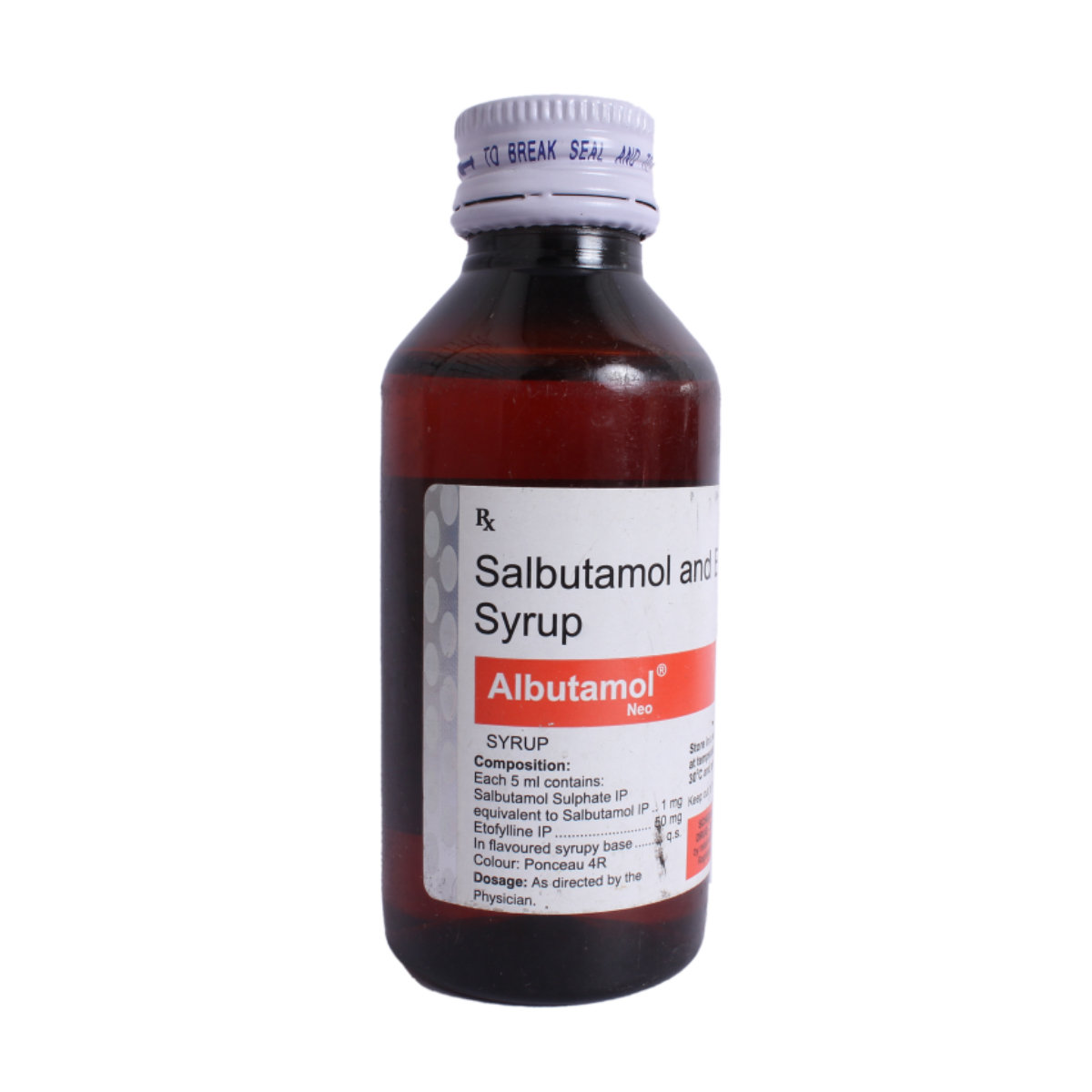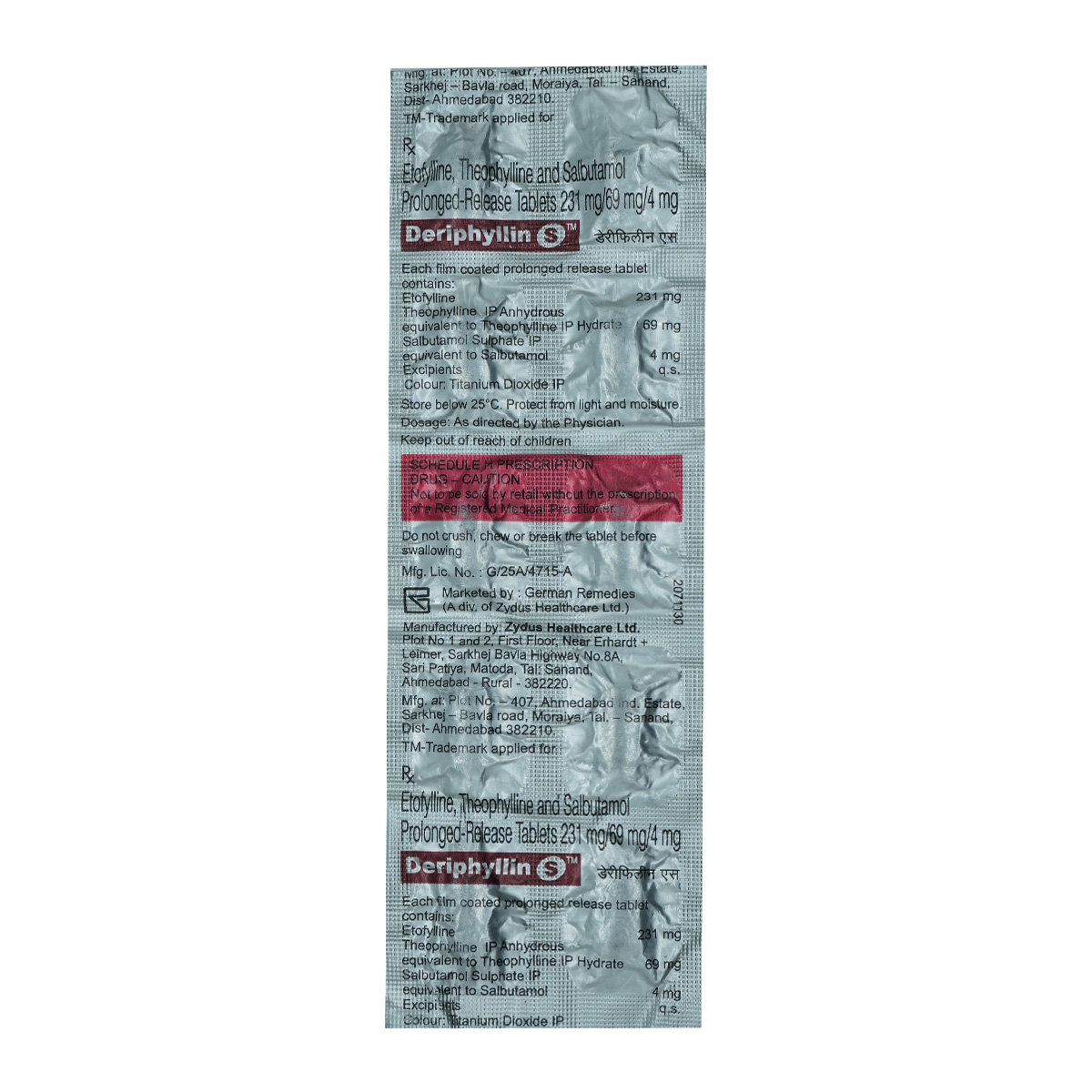Etofylline+salbutamol
About Etofylline+salbutamol
Etofylline+salbutamol belongs to a group of medications called bronchodilators used to treat productive cough associated with bronchospasm, bronchitis, asthma, and conditions involving thick mucus, wheezing, and chest congestion. A productive cough, also known as a chesty or wet cough, is a cough that produces mucus/phlegm.
Etofylline+salbutamol contains Etofylline and Salbutamol, which work by relaxing airway muscles and opening airways. Thereby, Etofylline+salbutamol helps treat productive cough associated with various conditions.
The doctor will determine the dose and duration of treatment with Etofylline+salbutamol based on your child’s medical condition. In some cases, Etofylline+salbutamol may cause side effects such as dizziness, headache, drowsiness, vomiting, nausea, sweating and muscle cramps. If any of these side effects persist or worsen, consult your doctor for further guidance.
Do not use Etofylline+salbutamol if your child is allergic to any of its components. Inform your doctor if your child has hypertension, cardiovascular disease, uncontrolled juvenile diabetes mellitus, hyperthyroidism, or seizures before using Etofylline+salbutamol to rule out potential interactions. Let the doctor know if your child is on any other medications.
Uses of Etofylline+salbutamol
Medicinal Benefits
Etofylline+salbutamol belongs to a group of medications called bronchodilators used to treat productive cough. It contains Etofylline and Salbutamol, which help relieve respiratory symptoms by relaxing airway muscles and opening airways. Etofylline increases lung function, while Salbutamol acts as a bronchodilator, making breathing easier. This combination medication helps treat a productive cough associated with bronchospasms, bronchitis, asthma, and conditions involving thick mucus, wheezing, and chest congestion.
Directions for Use
- Etofylline+salbutamol can be given with food or as advised by your doctor.
- Follow your doctor's instructions on the dosage and timing of this medication to ensure safe and effective use.
- Administer Etofylline+salbutamol to your child using a measuring cup to ensure the correct dose. Gently tilt your child's head back and administer the liquid slowly into the side of their mouth to prevent choking.
- Shake the bottle well before use.
Storage
Side Effects of Etofylline+salbutamol
- Headache
- Dizziness
- Drowsiness
- Vomiting
- Nausea
- Sweating
- Muscle cramps
Drug Warnings
Do not use Etofylline+salbutamol if your child is allergic to any of its components. Inform the doctor if your child has any pre-existing conditions, such as high blood pressure, heart disease, uncontrolled juvenile diabetes mellitus, thyroid problems, seizures, or other medical conditions. Let the doctor know about all the medicines, vitamins, and supplements your child is taking to ensure safe use and avoid potential interactions.
Drug Interactions
Drug-Drug Interactions: Inform the doctor if your child is taking bronchodilators (aminophylline), corticosteroids, diuretics, monoamine oxidase (MAO) inhibitors, or antidepressants.
Drug-Food Interactions: No interactions found.
Drug-Disease Interactions: Inform the doctor if your child has high blood pressure, heart disease, uncontrolled juvenile diabetes, thyroid problems, or seizures.
Drug-Drug Interactions Checker List:
Safety Advice

Alcohol
not applicable-

Pregnancy
not applicable-

Breast Feeding
not applicable-

Driving
not applicable-

Liver
cautionEtofylline+salbutamol should be used with caution if your child has liver problems. Please consult the doctor if your child has liver impairment.

Kidney
cautionEtofylline+salbutamol should be used with caution if your child has kidney problems. Please consult the doctor if your child has kidney impairment.

Children
safe if prescribedEtofylline+salbutamol is generally safe for use in children if prescribed. However, consult the doctor if you have any concerns.
Habit Forming
Diet & Lifestyle Advise
- Help your child identify their asthma triggers, such as pollen, dust, or certain foods, so they can take steps to avoid them and manage their symptoms.
- Give plenty of fluids or water to your child, as it can help loosen mucus and make it easier to cough out.
- Give your child foods rich in potassium (such as tomatoes, bananas, and avocados), as potassium is important for lung function, and its deficiency may cause breathing problems.
- Avoid giving foods and drinks such as cabbage, garlic, beans, onions, shrimp, dried fruits, pickled food, fried foods, carbonated drinks, bottled lemon and lime juice, and alcohol, as they may worsen asthma symptoms.
- Teach your child to practice good hygiene, such as washing their hands frequently, especially after being outside, to help prevent infections.
Patients Concern
Disease/Condition Glossary
Productive cough: A productive cough, also known as a chesty or wet cough, is a cough that produces mucus/phlegm. Common causes are respiratory infections, allergies, or chronic conditions like bronchitis and COPD.
Asthma: Asthma is a chronic condition characterized by narrowed, swollen airways that produce excess mucus, causing breathing difficulties. Common symptoms include wheezing, chest tightness, shortness of breath, and coughing, particularly at night.
Bronchitis: Bronchitis is the inflammation of the bronchial tubes, which carry air to the lungs, causing coughing, mucus production, and breathing difficulties. It can be acute (short-term) or chronic (long-term), often triggered by infection or environmental factors.
Bronchospasm: Bronchospasm is a tightening of the muscles that line the airways, causing them to narrow and restrict airflow. This can lead to symptoms such as wheezing, coughing, and difficulty breathing.
FAQs
Etofylline+salbutamol is used to treat productive cough caused by bronchospasm, bronchitis, and asthma. It helps relieve symptoms such as wheezing, chest congestion, and thick mucus.
Etofylline+salbutamol contains Etofylline and Salbutamol, which work by relaxing airway muscles and opening airways. Thereby, Etofylline+salbutamol helps treat productive cough associated with various conditions.
The side effects of Etofylline+salbutamol may include dizziness, headache, drowsiness, vomiting, nausea, sweating and muscle cramps. Most of these side effects of Etofylline+salbutamol will gradually resolve over time without requiring medical attention. However, if any side effects persist or worsen, consult your doctor for further guidance.
Do not stop giving Etofylline+salbutamol even if your child feels better, as it may worsen their condition. Please consult your doctor if you have any concerns.
Etofylline+salbutamol may cause dizziness as a common side effect. Therefore, be careful when your child is playing or doing things that need your full attention, like riding a bike, until you know how Etofylline+salbutamol affects your child.





